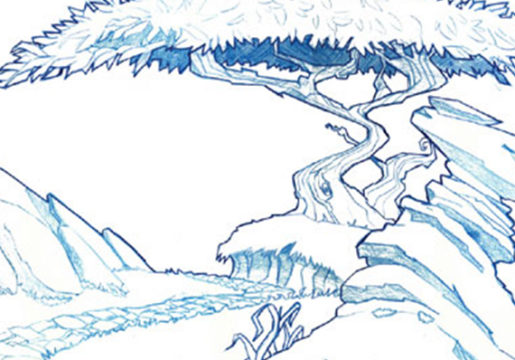

Here are 15 tips for drawing great layouts!
1. Read the script.
2. Study the style manual or art direction
3. Read the script again. (Seriously. The layout must support the action and story.)
4. Make sure you understand the connecting shots for visual continuity.
5. Don’t tell them what you can show them.
Tell the story visually whenever possible. Use props and background elements to reveal key elements of the story or to shed light on the backstory without having to use precious screen with unnecessary dialog.
6. Bring the Drama.
Set the emotional tone of the scene. If the sequence your designing for is light-hearted or happy, use comfortable camera angles and round soft shapes that support those emotions. If it’s a dangerous or scary scene, use more extreme camera angles, angled shapes, and jagged edges.
7. Think of the layout/background as a character.
Your background should serve as a supporting actor for the story and main characters.
8. Pick your P.O.V.
Choose a camera angle that is accurate based on who’s point of view it’s from.
9. Stage the area for action.
Use line, shape, and perspective to guide the viewers eye to where the action will take place. Be sure there’s enough room for the amount of action and characters called for in the shot. Also, be sure the main action area is kept simple enough for the action and character posing to read well.
10. Plan for any camera moves.
If the shot calls for a pan, rotation, or tilt, be sure to set your dimensions to accommodate the camera move.
11. Support the characters
12. FG, MG, BG
Add depth (unless the shot calls for flatness) by introducing foreground, mid-ground, and background elements that compliment each other and work as a unified composition.
13. Block in basic shapes first.
Stay away from details here. Rough in your basic shapes and composition.
14. Push the shapes
Once you are satisfied with your blocking pass, how can you push the shapes to maximize the medium? Try a few versions to see how far you can push the composition (always with an eye on the established art direction and story you are supporting).
15. Add the details
Subtlety is key. Have fun and don’t rush thru the details. Be sure the amount of detail doesn’t overpower the art direction of the character, but be sure to include some unique and unexpected details. With animation, always try to do what can’t be done with live action.
I hope these tips come in handy or give some fresh inspiration for your next layout or background!
